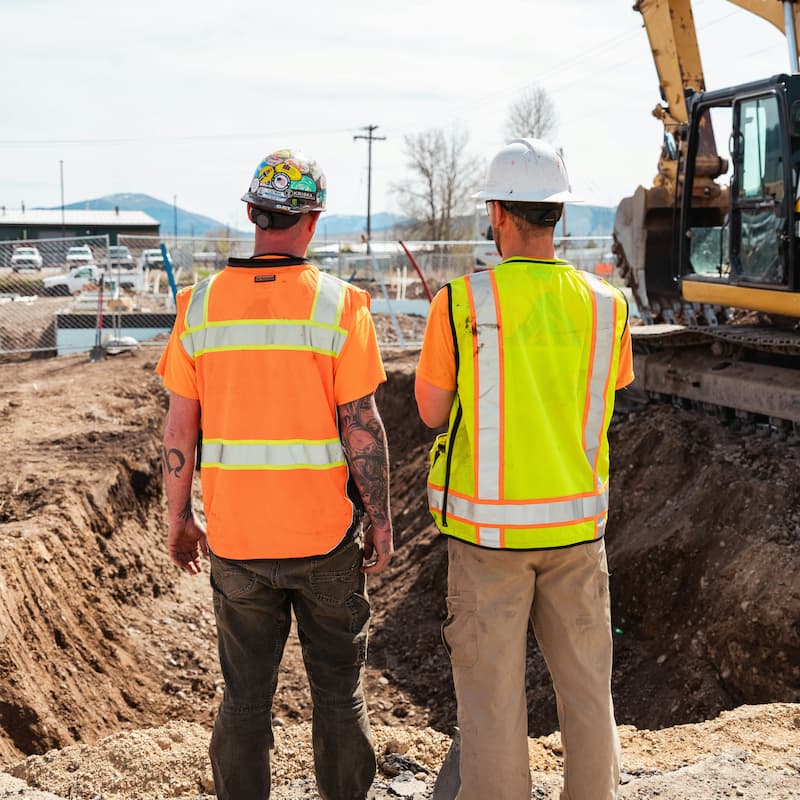
For those working in construction, maintenance, utilities, or infrastructure, the danger of falling from heights is always a concern. We’ve seen firsthand that the most effective way to prevent falls is by applying the Hierarchy of Control, a systematic approach that assists both employers and employees in managing risks in a responsible and effective manner.
According to the HSE, the Hierarchy of Control states that personal protective equipment (PPE) should be used as a last resort to protect against the dangers of working at heights. The following order should be followed when assessing controls: PPE is the least effective, and elimination is the most effective:
Carefully selecting equipment is crucial. Employers make sure that every employee is properly trained in its use and understands how to spot and report any problems.
Managing height safety isn’t just about ticking compliance boxes; it’s about saving lives. The hierarchy of control provides a structured way for evaluating hazards and prioritising the most effective controls.
This approach:
The hierarchy is ordered from most to least effective. Here’s how each level contributes to reducing the risks of working at height:
The most effective control is to remove the hazard altogether and completely avoid work at height. You should therefore ask yourself: can the task be completed from ground level?
Examples of completing a task at ground level could include:
If working at height isn’t necessary, the risk should be removed entirely.
If elimination isn’t possible, consider replacing the task or method with a safer alternative.
Examples of safer alternatives could include:
Substitution can reduce exposure to high-risk activities and is often more efficient in the long term.
If working at height is unavoidable, use physical solutions to minimise risk. This can also involve separating people from the hazard using barriers or remote systems.
Examples include:
As equipment specialists, we know these solutions are most effective when combined with proper training, ensuring workers use systems correctly and confidently. Isolation controls can also prevent contact with the hazard, helping to create a controlled environment.
Administrative controls guide how work is planned, supervised, and executed on site.
Examples include:
While not physical controls, they’re essential to ensuring consistent safe practice on site.
PPE is a critical back-up, but should never be your first line of defence. When working on a construction site especially for work at height, suitable PPE should be supplied to all team members by the employer.
Examples of PPE include:
PPE requires competent training and regular inspection, which is why our height safety training programmes are designed to ensure users are confident and compliant. Browse our online shop.
Even with all the right equipment and plans in place, poor execution can lead to disaster. Active supervision helps keep teams on track and good supervision reinforces standards and encourages a culture of accountability.
When working safely at height, knowledge is key. Workers need to understand the risks and how to use equipment and follow procedures properly. That’s why all team members should be trained and competent to supervise all work at height.
At Leading Edge, we provide tailored training to ensure your team is fully prepared. A well-trained worker is a safer worker. Don’t just comply, lead in safety!
Before work at height can begin, each task must be assessed for risk, and appropriate safety measures should be placed where needed. To do this, during our training we’ll utilise the Hierarchy of Control measures, and outline a step-by-step procedure to guide your height access provisions. Our expert trainers will start at the top with the safest possible procedure (avoiding the need to work at height altogether) and move down the hierarchy with progressively hazardous scenarios, giving you the knowledge to conduct your own future assessments. Learn more about our training courses.
The hierarchy of control isn’t just a legal requirement. It’s the foundation of any robust height safety strategy. By following these levels, businesses move beyond reactive measures and start preventing incidents before they happen.
At Leading Edge, we support you at every step from equipment selection to certified training and ongoing support.
Ready to take your height safety to the next level? Contact us today.
Copyright 2025 Leading Edge Safety. Devloped by Czargroup Technologies
